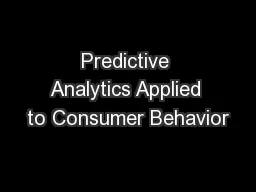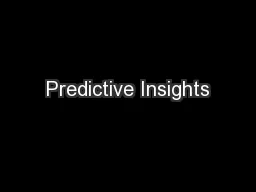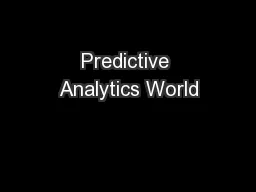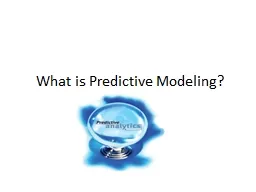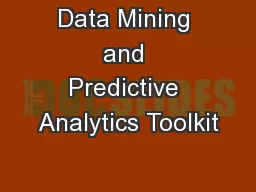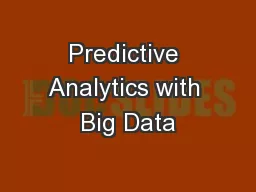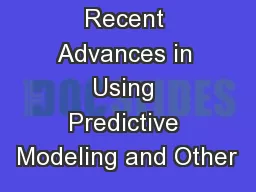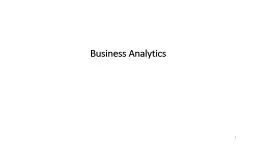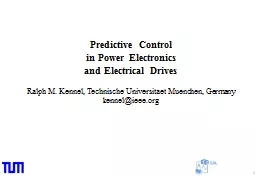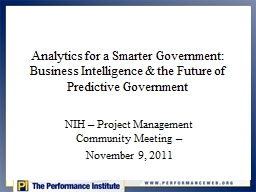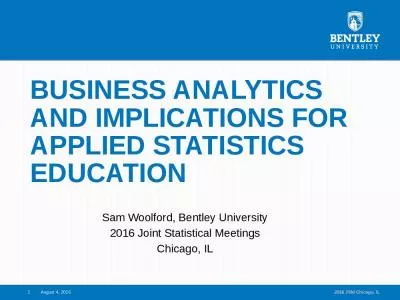PPT-Predictive Analytics Applied to Consumer Behavior
Author : giovanna-bartolotta | Published Date : 2017-09-11
Joe Loftus Adviser Phil Ramsey PhD Department of Mathematics and Statistics University of New Hampshire Introduction We live in a time of unprecedented data collection
Presentation Embed Code
Download Presentation
Download Presentation The PPT/PDF document "Predictive Analytics Applied to Consumer..." is the property of its rightful owner. Permission is granted to download and print the materials on this website for personal, non-commercial use only, and to display it on your personal computer provided you do not modify the materials and that you retain all copyright notices contained in the materials. By downloading content from our website, you accept the terms of this agreement.
Predictive Analytics Applied to Consumer Behavior: Transcript
Download Rules Of Document
"Predictive Analytics Applied to Consumer Behavior"The content belongs to its owner. You may download and print it for personal use, without modification, and keep all copyright notices. By downloading, you agree to these terms.
Related Documents

